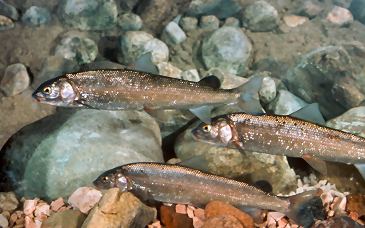Order Salmoniformes Higher classification Prosopium | Phylum Chordata Family Salmonidae Scientific name Prosopium williamsoni Rank Species | |
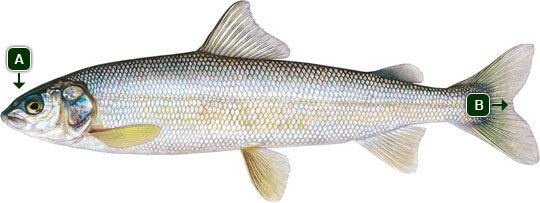 | ||
Similar Prosopium, Lake whitefish, Freshwater whitefish, Bull trout, Salmonids | ||
Catch mountain whitefish
The mountain whitefish (Prosopium williamsoni) is one of the most widely distributed salmonid fish of western North America. It is found from the Mackenzie River drainage in Northwest Territories, Canada south through western Canada and the northwestern USA in the Pacific, Hudson Bay and upper Missouri River basins to the Truckee River drainage in Nevada and Sevier River drainage in Utah.
Contents

The body shape is superficially similar to the cyprinids, although it is distinguished by having the adipose fin of salmonids. The body is slender and nearly cylindrical in cross section, generally silver with a dusky olive green shade dorsally. The short head has a small mouth underneath the snout. The short dorsal fin has 12-13 rays, with 11-13 for the anal fin, 10-12 for the pelvic fins, and 14-18 for the pectoral fins. The tail fin is forked. Size has been recorded at up to 70 centimetres (28 in) in length and a weight of 2.9 kilograms (6.4 lb).
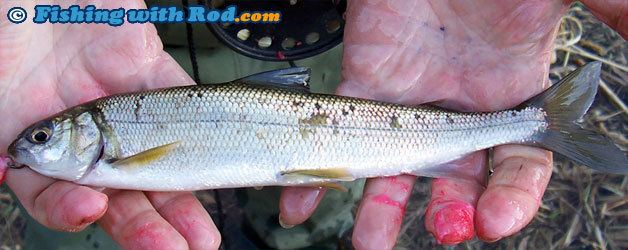
It is a fish of mountain streams and lakes, favoring clear cold water and large deep pools of at least a meter depth; the Lake Tahoe population lives just above the bottom in deeper water. Mountain whitefish are bottom feeders, stirring up the substrate with pectoral and tail fins to expose insect larvae and other invertebrates, including snails, crayfish, and amphipods. Their main feeding time is in the evening, but they will also take drifting prey during the day. The mountain whitefish frequently feeds in the lower strata of streams, but populations may rise to the surface to prey on hatching insects, including mayflies.
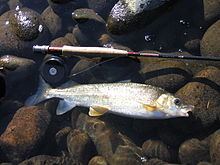
The spawning season is from October to early December, when water temperatures are 2-6 °C. The fish seek out areas of coarse gravels or cobbles at depths of at least 75 cm, and scatter the non-adhesive eggs so that they sink into the interstices. The eggs then develop slowly through the winter (6-10 weeks), hatching in the early spring.

This species occurs throughout the western half of North America, as far north as the Mackenzie River (Canada) and the drainages of the Hudson Bay, in the Columbia River, upper Missouri River, upper Colorado River, and so forth.
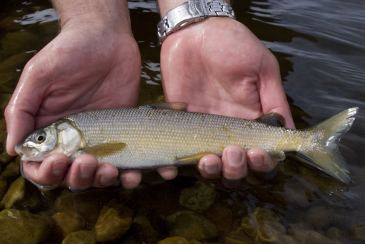
Although once important in the subsistence fisheries of some Native American peoples, this species has become less available in modern times, possibly due to overharvesting; as of 2002 detailed surveys had not been conducted. Some sportfishing for mountain whitefish occurs. Anglers commonly capture whitefish with small (size 16 to 22) nymphs such as Pheasant Tail, Hare's Ear, and Disco Midge. The fish will also respond to tiny spinners, streamers, and dry flies.
